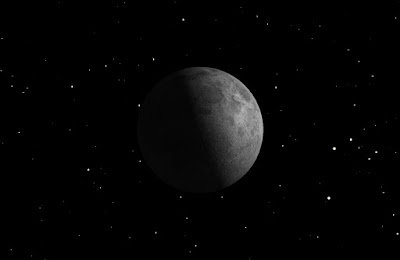Moon Phases
Wednesday, July 1, 10:20 p.m. EDT
Full Moon
The Full Moon of July is known as the “Hay Moon,” “Buck Moon,” or “Thunder Moon.” It rises around sunset and sets around sunrise; this is the only night in the month when the Moon is in the sky all night long. The rest of the month, the Moon spends at least some time in the daytime sky. This is the first of two Full Moons this month.Wednesday, July 8, 4:24 p.m. EDT
Last Quarter Moon
The Last Quarter Moon rises around 1:30 a.m. and sets around 1:30 p.m. It is most easily seen just after sunrise in the southern sky.Wednesday, July 15, 9:24 p.m. EDT
New Moon
The Moon is not visible on the date of New Moon because it is too close to the Sun, but can be seen low in the East as a narrow crescent a morning or two before, just before sunrise. It is visible low in the West an evening or two after New Moon.Friday, July 24, 12:04 a.m. EDT
First Quarter Moon
The First Quarter Moon rises around 1:15 p.m. and sets around 12:30 a.m. It dominates the evening sky.Friday, July 31, 6:43 a.m. EDT
Full Moon
This is the second Full Moon in July, what is sometimes called a “Blue Moon.” It rises around sunset and sets around sunrise; this is the only night in the month when the Moon is in the sky all night long. The rest of the month, the Moon spends at least some time in the daytime sky.Observing Highlights
Venus and Jupiter within 0.3 degrees
Wednesday, July 1, dusk
Venus and Jupiter will pass really close to each other, appearing within the same telescope field. Both will be 32 arc seconds in diameter, but Jupiter is much further away from both the Earth and the sun, so will be much fainter than Venus.Uranus and the Moon
Wednesday/Thursday, July 8/9, dawn
The Moon will be close to Uranus just before sunrise. In the lands surrounding the Indian Ocean, the Moon will actually occult Uranus.Venus at greatest brilliancy
Thursday, July 9, dusk
Venus reaches its greatest brilliancy at magnitude –4.7.Aldebaran and the Moon
Sunday, July 12, sunrise
The waning crescent moon will pass close to the bright red star Aldebaran low in morning twilight. The Moon will occult Aldebaran as seen from eastern Russia, northern Japan, Alaska, northern Canada, Greenland, and Iceland.Venus and the Moon
Saturday, July 18, dusk
The Moon will be close to Venus just after sunset. Venus will appear in binoculars as a tiny crescent just north of the crescent moon. The moon will occult Venus as seen from New Guinea, northeastern Australia, Melanesia, and French Polynesia.Ceres at opposition
Saturday, July 25, 4 a.m. EDT
Ceres, the largest asteroid or smallest dwarf planet, will be in opposition to the Sun. At magnitude 7.5, it will be located right on the border between Sagittarius and Microscopium, just south of Capricornus.Planets
Mercury is well placed in the eastern sky at dawn for the first half of the month for observers in the Southern Hemisphere.
Venus shines high in the western sky after sunset, reaching its greatest brilliancy from the sun on July 9.
Mars is too close to the Sun to be visible.
Jupiter is low in the western evening sky all month, close to Venus on the 1st and 31st of the month.
Saturn is well placed in Libra in the evening sky.
Uranus rises near midnight in Pisces.
Neptune rises in the late evening in the constellation Aquarius.
Geoff Gaherty
Starry Night Software Support
All graphics © 2015 Starry Night Software

















